Daniel Fine
Kansas No More
Dance and Digital Media Design
Co-Creator, Digital Media Designer & Co-Set Designer
Role:
Peer-Reviewed Outcomes/Dissemination:
November 2017
Performance: Dance Gala, Hancher Auditorium
University of Iowa. Iowa City, IA
October 2018
Solo Conference Presentation: The Art of Content Creation
LDI 2018 Conference and Tradeshow. Las Vegas, NV
March 2019
Solo Conference Presentation: From Artistic Inspiration to Final Design
USITT 19 Conference & Stage Expo. Louisville, KY
Photo Gallery:

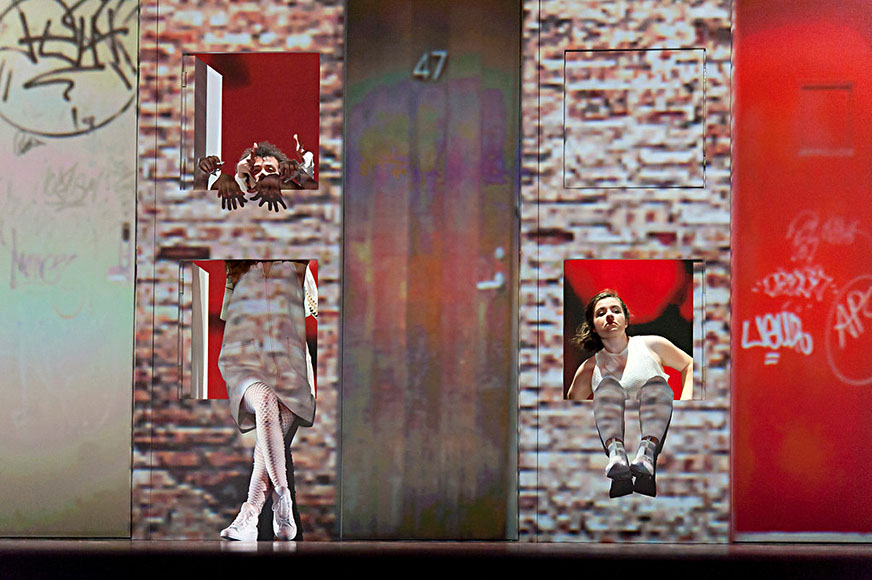
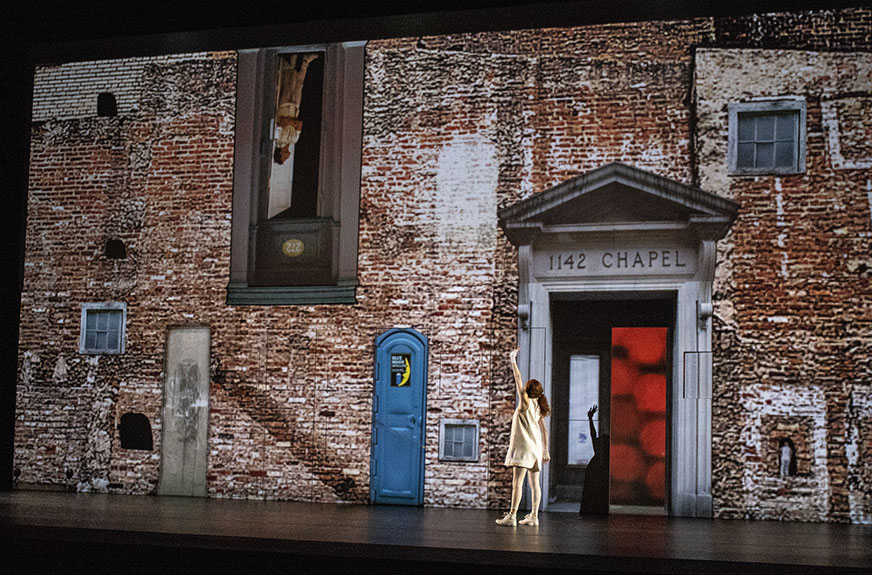
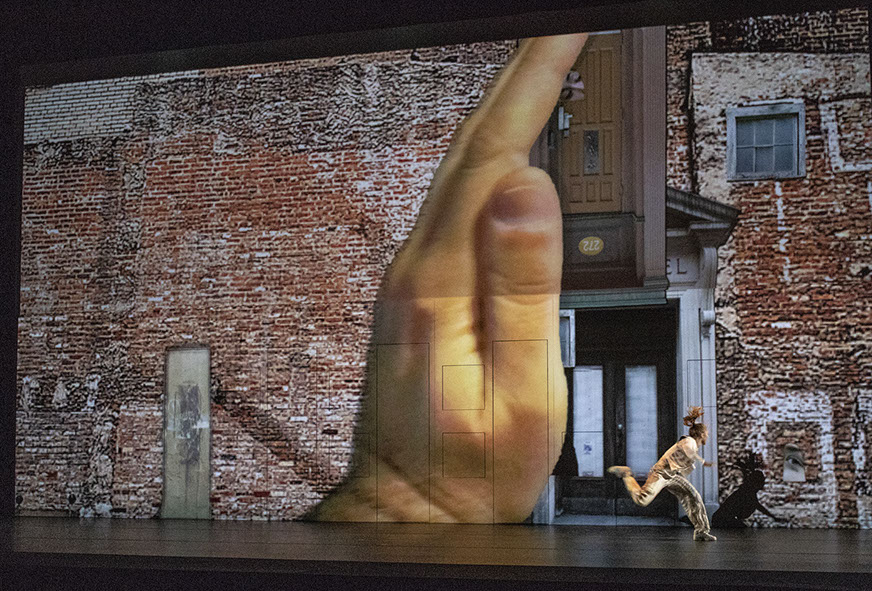
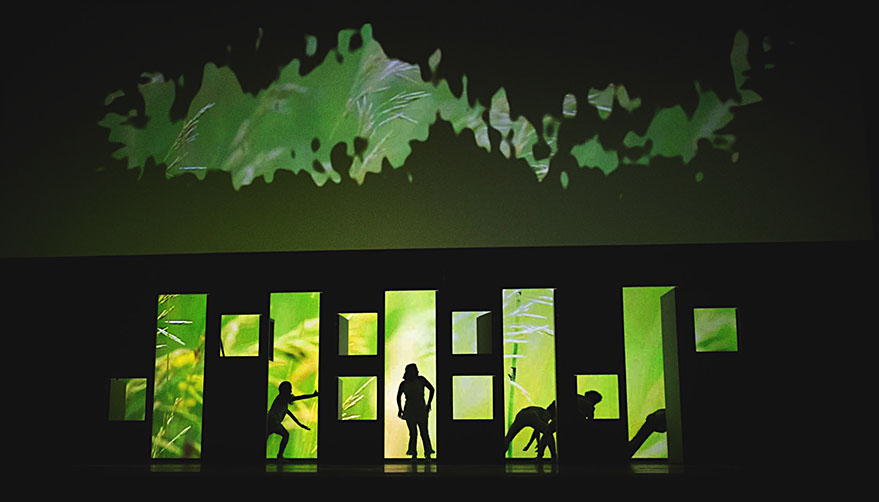
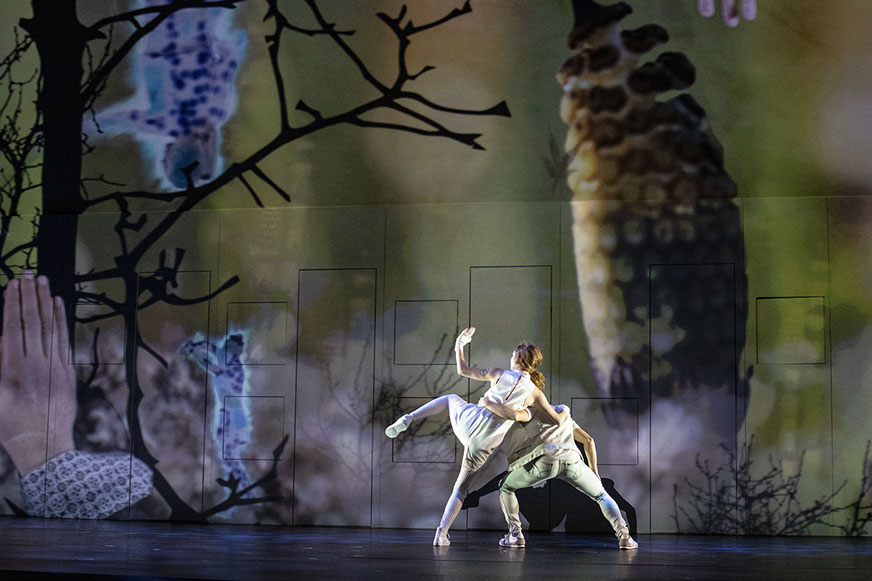
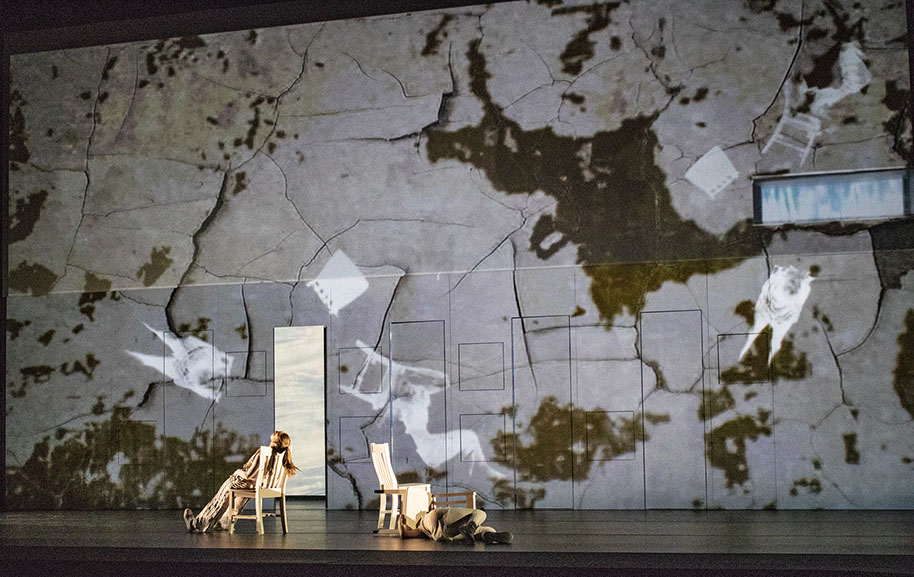

Hand makes the projected house grow.
Dancers open windows in the screen. Rear projection screen is seen behind them through the open windows.
Doors and windows populate as live dancers and video dancers interact.
Hand wipes the screen and stage clear.
Dancers lit only with back light from rear projection.
Hands continue to manipulate the dance as dancers move in and out of the screen.
Two live cameras (one above and one onstage) with video delay.
The final sequence.
1 - 8
<
>
Video:
Link to: Video of presentation at LDI. (Note: I discuss multiple projects on this solo panel talk.)
Key Creative Team:
Co-Creator | Choreographer | Charlotte Adams
Associate Digital Media Designer & Board Op | Marc Macaranas
Assistant Digital Media Designer & Video Programmer | Ted Brown
Costume Designer | Margaret Wenk-Kuchlbauer
Lighting Designer | Laurel Shoemaker
Co-Scenic Designer | Donald Ladd
Additional Photography | Dana Keeton
Process/Creative:
In fall of 2016, choreographer Charlotte Adams and I began discussions of collaborating. Charlotte was no stranger to creating original dance pieces that used new technologies, but she had never made a piece that used large-scale projections or relied heavily on the integration of prerecorded and live video. Our piece would use both. This was first major collaboration with choreographer on the co-creation of a large-scale dance concert. We were excited to embark on this new journey together and thus began a yearlong collaboration to create a new work that positions digital media as an equal performer to a dancer, and a designer as equal collaborator to a choreographer.
Themes:
As we were nearing a national election for President, in a very divisive America, our discussions began around the theme of opposites. We were interested in showing two sides of the same idea. This is how the idea for the set - a giant projection wall dividing the stage - was born. After the election, we abandoned this theme and instead focused on newly emerging themes, that would keep the piece light and fun.
Charlotte and I were interested in the ways live dance onstage interacted with projections, the relationship between live and prerecorded, and the power dynamics between dance makers and dancers. We were interested in hiding/revealing some of the manipulations in the creation/making of the piece. The piece opens with our hands putting on a record that then plays the opening track. Our hands and feet then place digital elements of scenery and the dancers, until the dancers escape from the screen and burst onto the stage. Humor plays large role in our work and the piece ends with the dancers taking back power from the hands that are manipulating them and unveils the Wizards behind the curtain.
Approach:
We were very interested in the screen serving as a portal to and from projected/mediated worlds to the live physical world onstage. I served as co-scenic designer to create a custom projection wall that had doors and windows that the dancers would be able to enter and exit into and out of the screen. The top two-thirds of the screen was a front projection screen. We had a rear projection screen behind the front wall so that when the dancers opened the doors and windows there would be a world within (or beyond).
As we were interested in creating a tight integration between live/onstage performance and pre-recorded performance on the screen. This meant that a number of the pieces required tightly rehearsed choreography to the projected video. The integration with live dancers and digital media, meant that the digital media system had to be in the rehearsal room. We setup a mock system in our rehearsal hall (Space Place Theatre) to simulate what the final results would be in the performance venue (Hancher).
The video workflow required that a good deal of the choreography had to be created and learned early in the rehearsal process. We created a score, created movement, rehearsed and then recorded sections of the choreography in a greenscreen studio. These videos were edited, and filters applied. Then they were mapped to the screen and cues created, so that the live dancers could then rehearse again with the prerecorded elements.
There were two live cameras in one section of the dance. This required the use of an Isadora patch to capture and manipulate the live cameras and then route the video output to Watchout for display. A heavy delay effect was put on the video, creating a kind of ghosting/trailing effect. This section offered another POV of Charlotte and I watching the dancers and manipulating them.
For the majority of my designs, I like to create and/or use as much custom/original artwork as possible. We used only 5 stock images, otherwise everything was created by the digital media team - from original photographs to custom animations and videos. I spent six months photographing doors and windows from my travels around the USA, including New Haven, CT, New York City, Vermont, Iowa City, Boston, and New Hampshire.
Some of the ideas, themes, and approaches explored in this piece are continued in a later dance work,
(dis)APPEAR(d)ances, a collaboration with choreographer Jennifer Kayle.
Press:
“Digital media takes the stage at Dance Gala 2017,” by Rhiana Chickering. The Daily Iowan. Read the full review.
“Dance-media collaborations are a hot trend in the performing world, and the Hancher stage, with its front and rear projection capabilities, will light up with We’re Not in Kansas Anymore, a joint project of choreographer Charlotte Adams and digital-media designer Daniel Fine,” by Source Staff, The Iowa Source. Read the full review.
Teaching:
I had two student assistants on this project: an MFA choreographer and a senior BA designer. A key component of this process was providing as many learning opportunities for my student assistants as possible. Assistant designer, Marc Macaranas, not only helped shoot video and edit content (learning After Effects), but also was the video operator for all the performances. The timing of the cues was super crucial for this piece and since Marc is a dancer, we all felt he would be more in-tune with the dancers. He called his own cues. Assistant designer, Ted Brown, learned the 3D features in Watchout and programmed the show. I used Isadora in the rehearsal hall to quickly build looks and cues. Ted translated that all to Watchout.
copyright 2024
